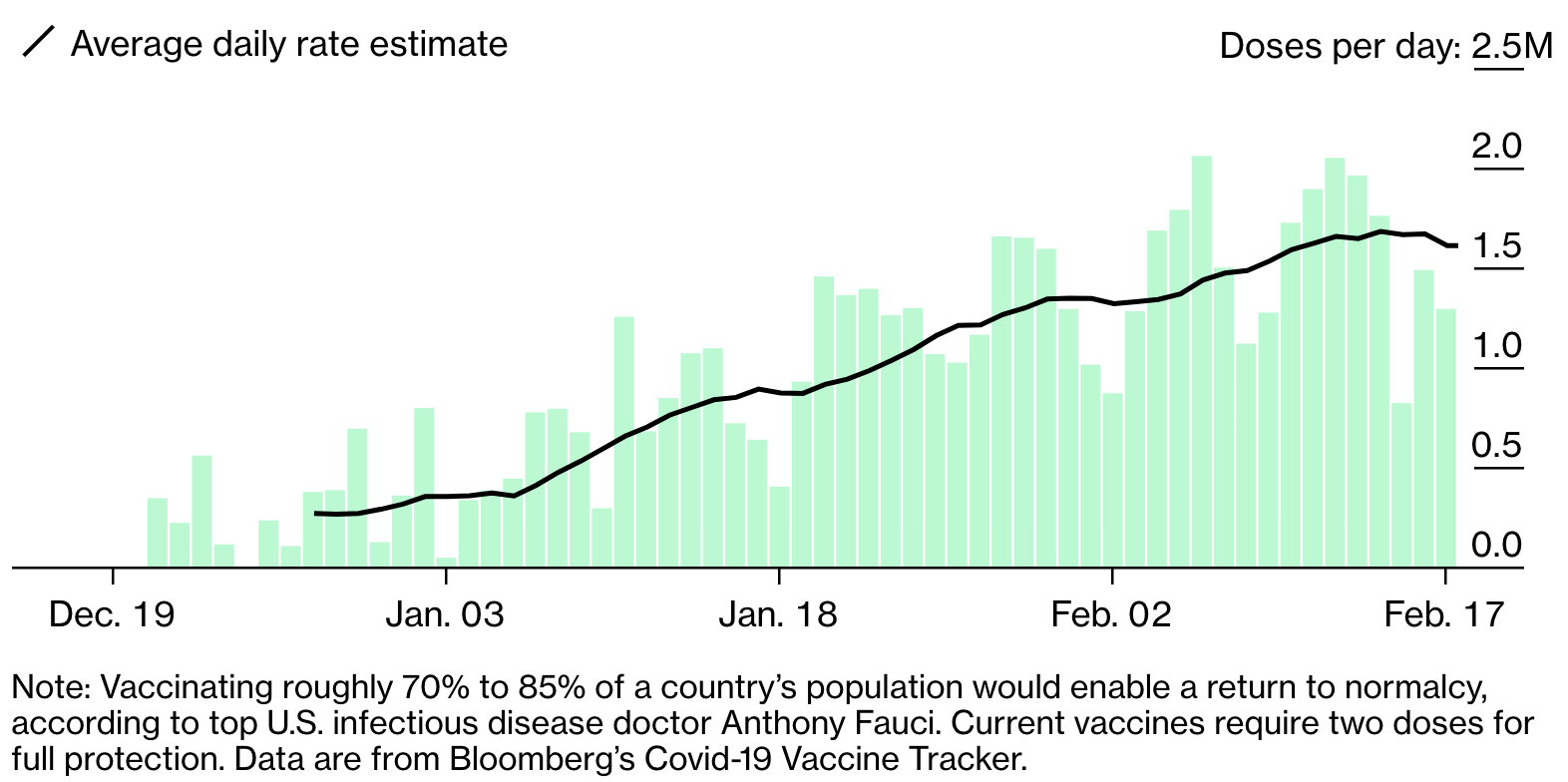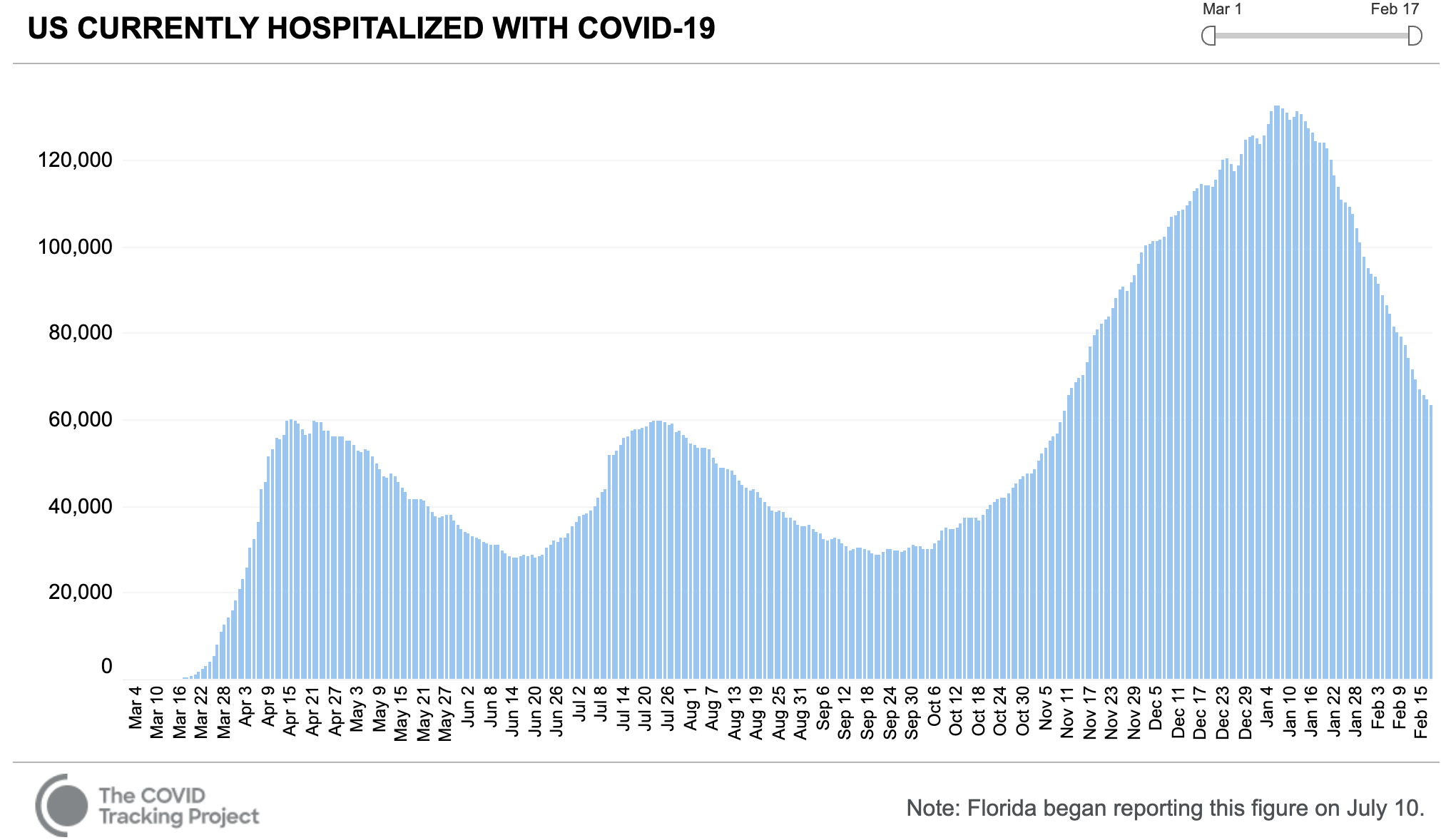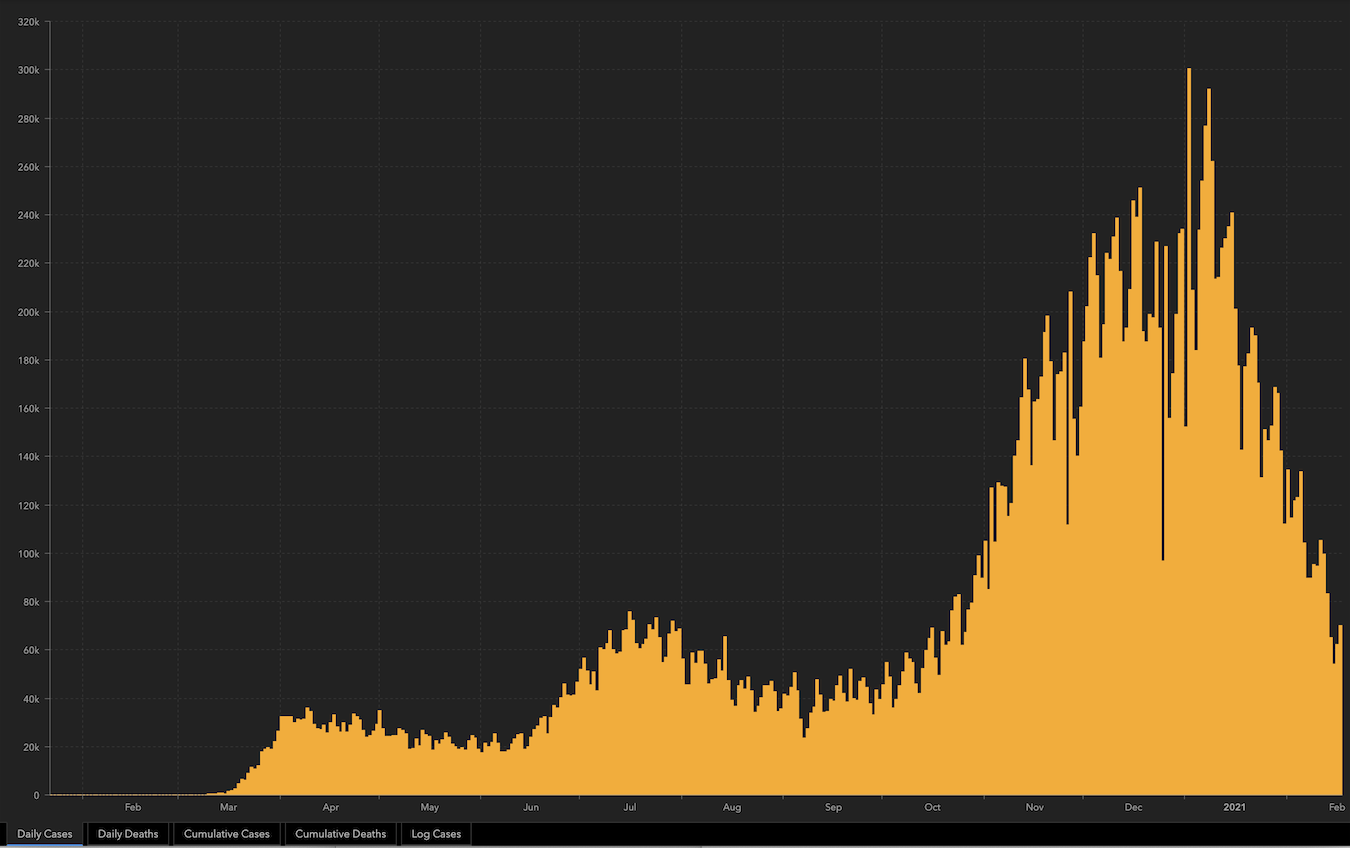Key Takeaway: There is no returning to a pre-pandemic economic “normal,” but we’re dealing with it
We have seen the best our technology can produce when Moderna and Pfizer announced their vaccines at the end of December. The speed and efficacy are breathtaking and miraculous. As of this week, the US has given out over 57 million doses and globally it’s 186 million. At this rate, the Biden administration is easily meeting their goal of 100 million doses in 100 days as the nation is immunizing 1.69 million per day according to Bloomberg’s Covid-19 Vaccine Tracker. Yet even at this elevated rate, it’s estimated it would take 9 months to cover 75% of the population.

The goal is to create herd immunity where there is a significant decline in the number of new infections as the pool of available hosts declines from the immunizations. We have already seen a dramatic decline in the number of hospitalizations from the virus.

And the number of infections.

All indicate an ebbing of the virus’ impact on the population and potentially on the economy. Fantastic.
There is guarded optimism the US will continue to see significant improvements as the production and distribution of the vaccines ramps up even further with output doubling in the coming weeks according to Bloomberg. Some researchers, like Dr. Marty Makary, think we could achieve herd immunity by April.
Sadly, I gotta be the guy leaving the party telling the hosts, “Had a great time, but someone dumped a bottle of red wine on the white carpet, somebody threw up on the floor in the bathroom and your dog is loose.”

For the red wine, the virus has mutated with strains from the UK (B.1.1.7), South Africa (B.1.351) and Brazil (P.1) all showing signs of higher infectious rates and mortality. (Read CDC descriptions here.) This is to be expected as it mimics previous virus patterns similar to the Spanish Flu in 1918-1919. Vaccine-makers are developing booster shots to help those who have already got the jabs. And other producers are developing vaccines intended to work on the new strains. The best news is that none of the tweaked vaccines are required to go through a large scale clinical trial to prove the jabs work.
The second area is one we’ve covered in a previous article on the Top 5 Economic Risks for 2021. And it was the #1 risk on the list: vaccine hesitancy. If a large enough part of the population is not vaccinated, then it will be next to impossible to create herd immunity. CDC’s Dr. Fauci recently stated the US will need 75-80% of the population vaccinated to achieve this goal. “We need to have some humility here,” he added. “We really don’t know what the real number is. I think the real range is somewhere between 70 to 90 percent. But I’m not going to say 90 percent.” (NYT) Polling has recently indicated more Americans today want to take the shots than in 2020.
When I do virtual events for clients, I always ask the question of when people would get the shot to better understand the mindset of the audience. In May, the rate wanting to get the shot was below 50%. Over the last 2 weeks over 4 different events, the rate was above 70%. This is encouraging.
Lastly, the administration of the vaccinations has been uneven in the United States according to Becker’s Hospital Review. New Mexico, North Dakota and West Virginia have done a great job on the roll-out and administered close to 90% of the distributed vaccines. Other states, like Illinois, struggle to get over 75% with Alabama the lowest at 63%. And these percentages are from the number of doses distributed to the state, not the total population needing to be jabbed to achieve herd immunity. (Think Venn diagram)
Given these 3 factors, I believe we are now in the process of moving from a pandemic into a situation where the virus is endemic.


